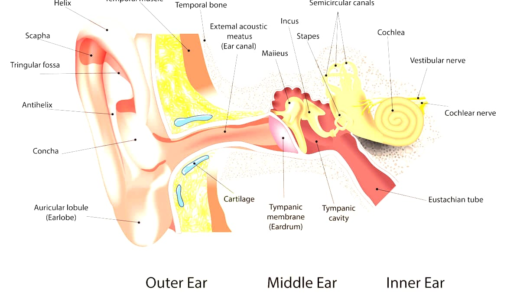This article covers the importance of serpentine belts in vehicles, how to identify a failing alternator belt, tools for replacement, step-by-step removal and installation, maintenance tips, common mistakes, and when to seek professional help.
What is a Serpentine Belt?
Serpentine belt is crucial for your vehicle’s operation. It’s a long, winding belt that drives multiple peripheral devices in your engine, such as the alternator, power steering pump, water pump, and air conditioning compressor. If your serpentine belt fails, these components won’t function properly, which can lead to serious engine problems.
Understanding the function of the serpentine belt helps in recognizing its importance. It transfers power from the engine’s crankshaft to these accessories, allowing them to operate efficiently. Regular checks on the condition of the serpentine belt can save you from unexpected breakdowns and costly repairs.
How to Tell if Your Alternator Belt is Failing?
Identifying signs of wear and tear on your alternator belt can prevent larger issues down the line. Common signs include:
- Squeaking or squealing noise: This often indicates that the belt is slipping or worn out.
- Visible cracks or fraying: Check for any signs of physical damage on the belt’s surface.
- Battery warning light: If this light appears on your dashboard, it may suggest that the alternator is not functioning properly due to a failing belt.
- Decreased performance: If you notice dimming headlights or issues with power steering, it could be a sign of a failing alternator belt.
Regular inspections can help catch these signs early. If you notice any of these symptoms, it’s best to replace the alternator belt promptly.
Tools Needed to Replace the Alternator Belt
Having the right tools for replacing the alternator belt ensures a smooth process. Here’s a list of essential tools:
- Wrench set: A variety of sizes to fit different bolts.
- Screwdrivers: Both flathead and Phillips for removing any covers or clamps.
- Belt tensioner tool: This tool helps release tension on the belt for easy removal.
- New serpentine belt: Ensure it’s the correct size and type for your vehicle.
- Torque wrench: To tighten bolts to manufacturer specifications after installation.
Gathering these tools before starting your project will make the replacement process more efficient and less stressful.
Steps to Remove the Old Alternator Belt
Removing the old alternator belt is crucial for a successful replacement. Start by ensuring your vehicle is parked on a flat surface and the engine is cool. Here’s how to do it:
- Disconnect the battery: Always start by disconnecting the negative terminal of the battery to avoid any electrical issues.
- Locate the belt tensioner: Find the belt tensioner, which typically has a pulley connected to it. This is where you will relieve the tension on the belt.
- Release tension: Use the belt tensioner tool or a wrench to rotate the tensioner counterclockwise. This will loosen the belt, allowing you to slide it off the pulleys.
- Remove the belt: Carefully slide the old belt off the pulleys. Take note of how the belt is routed for easier installation of the new one.
Inspect the old belt for wear and damage as you remove it. This can give insights into potential issues with the pulleys or tensioner that might need attention.
How to Install a New Alternator Belt
Installing a new alternator belt requires precision and care. Here’s a step-by-step guide:
- Route the new belt: Refer to the belt routing diagram, usually found on a sticker under the hood. Route the new serpentine belt around the pulleys accordingly.
- Reapply tension: Rotate the belt tensioner again with the tool or wrench to allow the new belt to fit over the tensioner pulley.
- Check alignment: Ensure the belt is correctly aligned on all pulleys and that it sits in the grooves properly.
- Reconnect the battery: Once the belt is installed, reconnect the negative battery terminal.
Double-check everything before starting the engine. A correctly installed belt ensures smooth operation and prevents future issues.
Tips for Tightening the New Belt Properly
Getting the tension right on the new alternator belt is vital for optimal performance. Here are some tips:
- Follow manufacturer specifications: Always refer to your vehicle’s manual for the specific tension requirements.
- Use a torque wrench: If applicable, use a torque wrench to ensure the bolts are tightened to the specified torque, preventing over-tightening.
- Check tension after installation: After a short drive, recheck the belt tension. New belts can stretch slightly, so it’s good to verify.
Proper tension will extend the life of the belt and reduce the risk of it slipping off during operation.
Common Mistakes to Avoid When Replacing the Alternator Belt
Replacing the alternator belt can be straightforward, but there are pitfalls to watch out for:
- Incorrect routing: Failing to follow the belt routing diagram can lead to improper function. Always double-check the path before tightening.
- Neglecting the tensioner: If the tensioner is worn or damaged, it should be replaced. A new belt on a faulty tensioner will lead to quick failure.
- Over-tightening: Applying too much tension can cause unnecessary wear on the belt and pulleys. Always adhere to specifications.
- Skipping inspections: Not checking the condition of pulleys and the tensioner can lead to future problems. Regular maintenance is key.
Avoiding these common mistakes will ensure a smoother installation process and enhance the longevity of your new alternator belt.
How Often Should You Check or Replace Your Serpentine Belt?
Serpentine belt maintenance is essential for the smooth operation of your vehicle. Regular checks can prevent unexpected failures and costly repairs. It’s advisable to inspect your serpentine belt every 30,000 to 50,000 miles or at least once a year. If you notice any signs of wear, such as cracks or fraying, it’s time for a replacement.
Additionally, consider checking the belt whenever you perform other maintenance tasks, like oil changes or brake checks. This ensures you catch potential issues early. If your vehicle is older or has higher mileage, more frequent checks might be necessary. Ignoring the serpentine belt can lead to failure of critical components, resulting in a breakdown.
Signs You Might Need a Professional Inspection
While regular checks are vital, certain signs indicate you should consult a mechanic. If your vehicle exhibits unusual noises, such as squeaking or grinding, it could point to a failing serpentine belt or related components. Additionally, if you notice dimming lights or problems with power steering, these might signal a failing alternator belt.
Other red flags include overheating engines or warning lights on your dashboard. If you are unsure about the condition of your belt or the noise persists after inspection, seeking professional help is advisable. Mechanics can provide a thorough diagnosis and recommend necessary repairs or replacements.
FAQs About Serpentine Belts
Many drivers have questions regarding serpentine belts. Here are some common inquiries:
- How long do serpentine belts last? Generally, serpentine belts last between 60,000 to 100,000 miles, but regular inspections are crucial.
- Can I drive with a damaged serpentine belt? It’s not safe. A damaged belt can lead to loss of power steering and overheating, putting you at risk.
- What happens if the serpentine belt breaks? If it breaks, you’ll lose power to several components, which can cause your vehicle to stall or overheat.
- How can I tell the age of my serpentine belt? Most belts have a date code printed on them, but if you’re unsure, consult your vehicle’s manual.
These FAQs can help clarify common concerns and assist in maintaining your serpentine belt effectively.





Comments are closed.